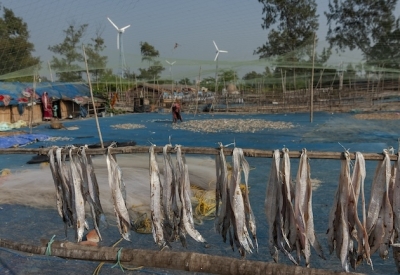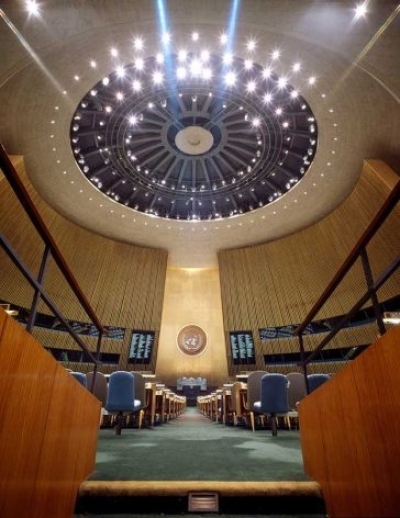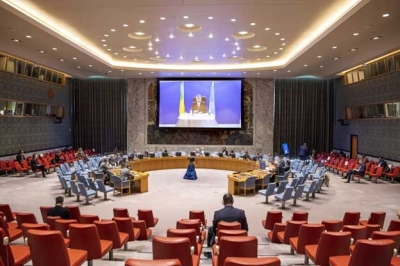Extreme cold temperatures that seem unthinkable to most are an ordinary thing in this region of Russia. At this temperature, people still repair pipes and even worry about global warming.
Yakutia is the largest (covering 3 time zones) and coldest region of Russia. Winters are very long (from October to April) and very harsh. In November, the temperature can already drop to minus 30C. And, in the very north, there are places where snow does not even have time to melt during the summer. In mid-January 2023, a temperature of minus 62 degrees was recorded. But, it can get even colder. Locals say it’s warm weather for January and that it was much colder before. This fact does not make them happy. On the contrary, they are worried.
Going for a walk in — 50C
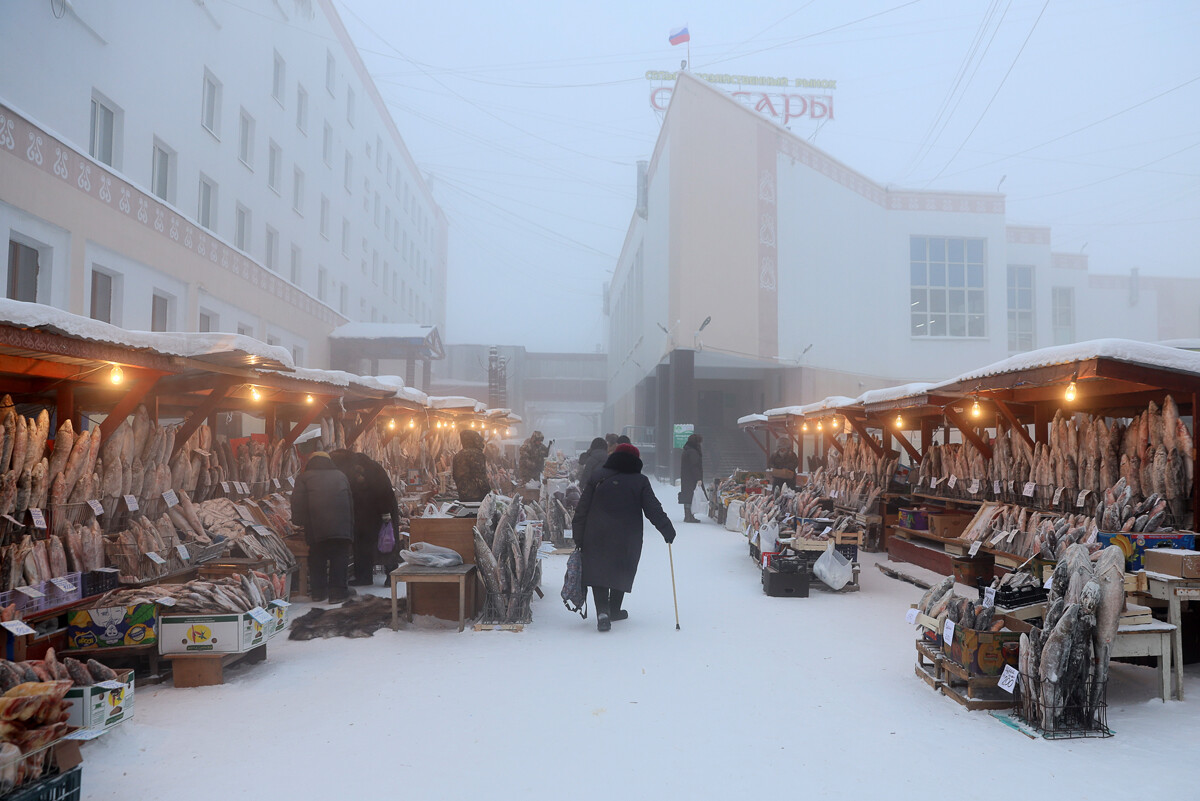
A market in Yakutsk.
Vadim Skryabin/TASS
More than 350 thousand people live in the regional capital, Yakutsk, and its population increases year by year, despite extremely cold winters.
You can find shopping centers, cinemas, schools, research institutes and cafes, while public transport functions just like in any other city. And it operates all year round, without interruptions.
When the thermometer reads minus 50C, the city becomes like the residence of the Snow Queen. A thick layer of frost grows on trees, lampposts, wires and metal fences. A dense frosty haze covers the streets with a blanket.
"It’s a great excuse to walk through downtown Yakutsk," jokes Vika Andreeva, who runs a popular blog about life in Yakutia.
Just five minutes outdoors is enough for the "snowy" makeup to appear on your face by itself: your lashes become white and fluffy, your cheeks become red. "In winter, our girls either don’t use any mascara at all or use waterproof mascara, otherwise you turn into a panda," she says. And, of course, you need good skincare products, with peptides, ceramides and oils, to protect your skin from the bitter cold.
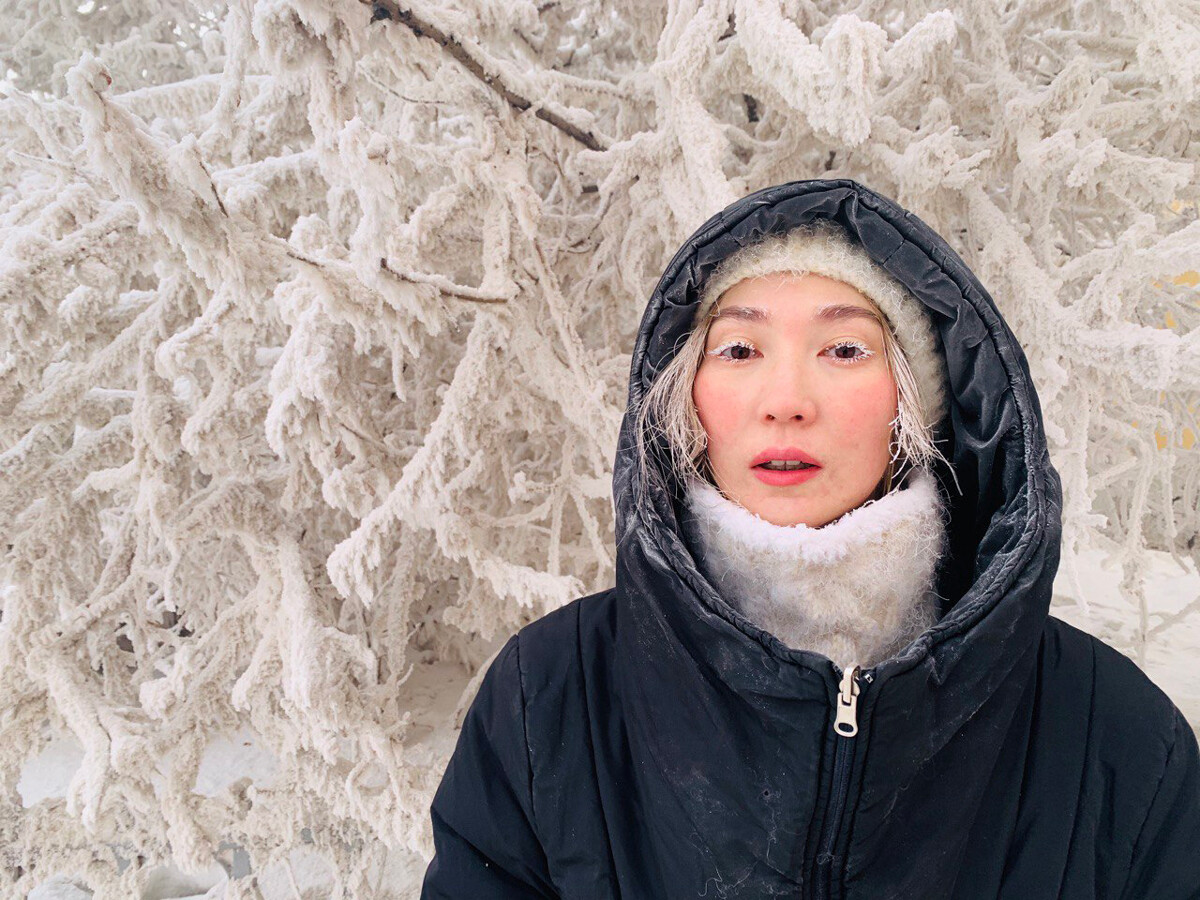
Vika Andreeva
One of the peculiarities of Yakut towns is that all pipes run above the ground, so that the heat from the houses doesn’t heat up the ground and the permafrost doesn’t thaw. To keep the pipes from freezing in winter, they are insulated (read more about Yakutsk architecture here).
"If an accident happens in winter, for example, a water pipe breaks, which happens often, a huge amount of ice forms instantly," says Vika. "In this case you have to react very quickly, otherwise the ice will block the pipe and it will freeze up completely." But people in the north are very cautious, there’s no other way.
Cold is a tourist attraction
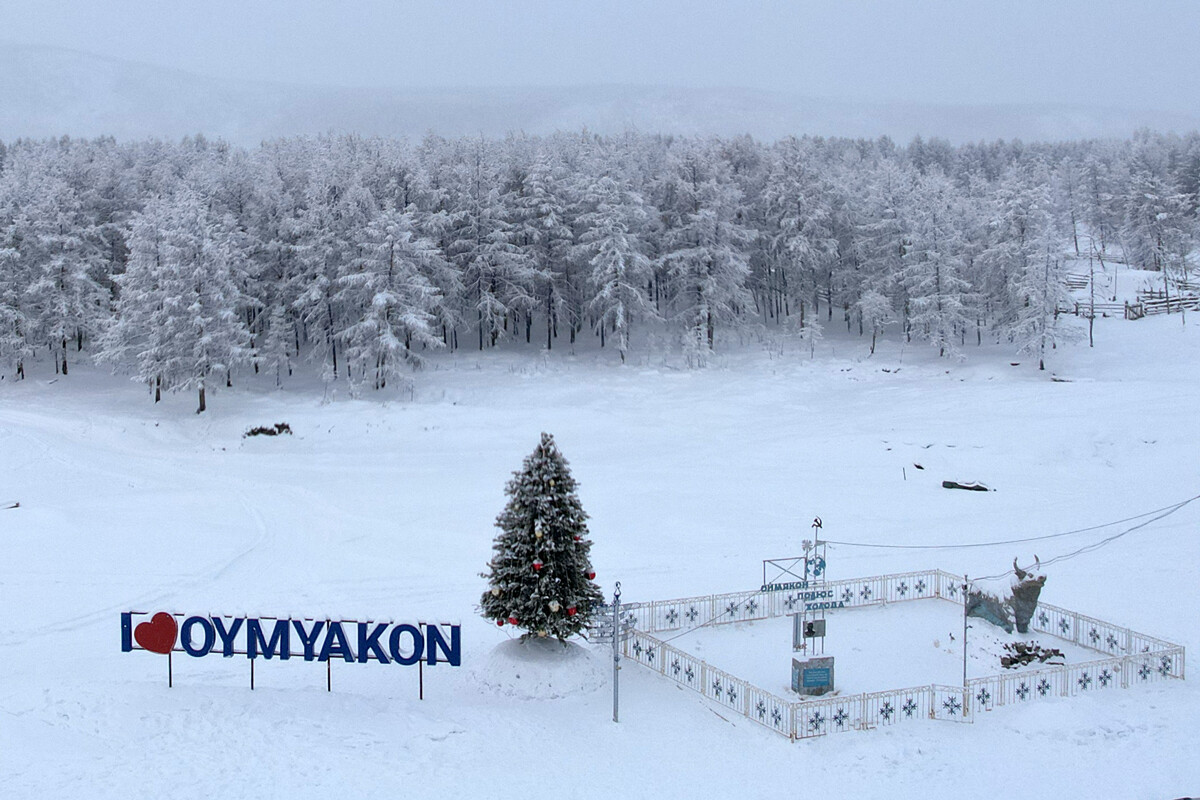
New Year tree in Oymyakon.
Vadim Skryabin/TASS
The so-called "pole of cold" is also located in the Yakut countryside — the village Oymyakon, where, in 1933, a temperature of minus 67.7C was recorded. There are also unofficial records of temperatures even below minus 70C. This is one of the coldest places on our planet where people permanently live and work.
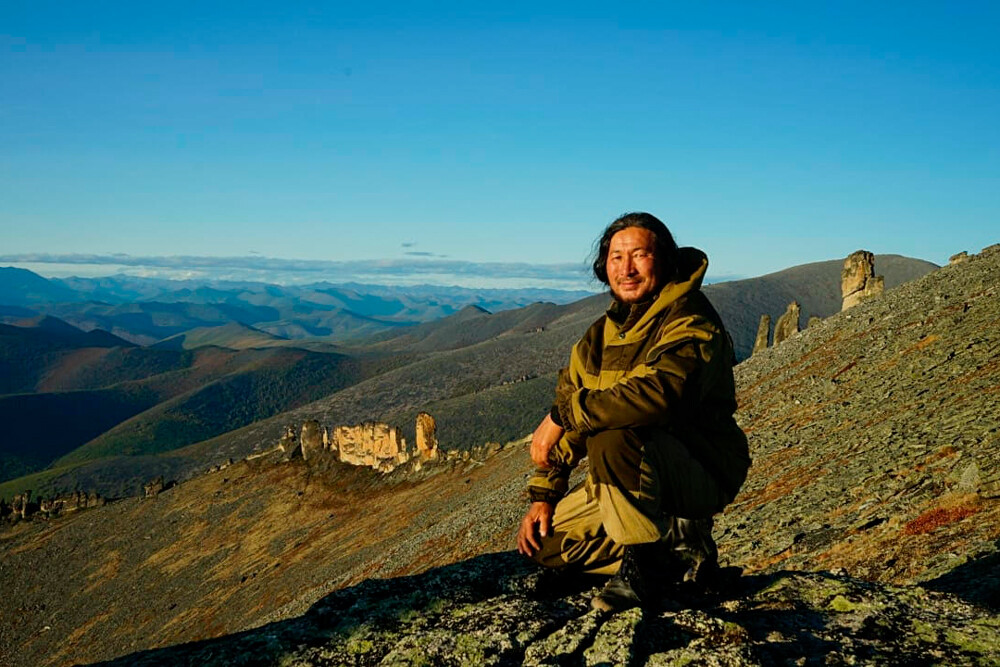
Semen Sivtsev.
Semen Sivtsev / @sivtsevsema958
"We have unique Yakut horses," says photographer Semen Sivtsev. "They are semi-wild, but they’re used to our weather, they just need to be fed. And we also have Yakut cows, which also are tolerant to the cold. They feed and graze on their own, but you have to keep them in the barn at night."
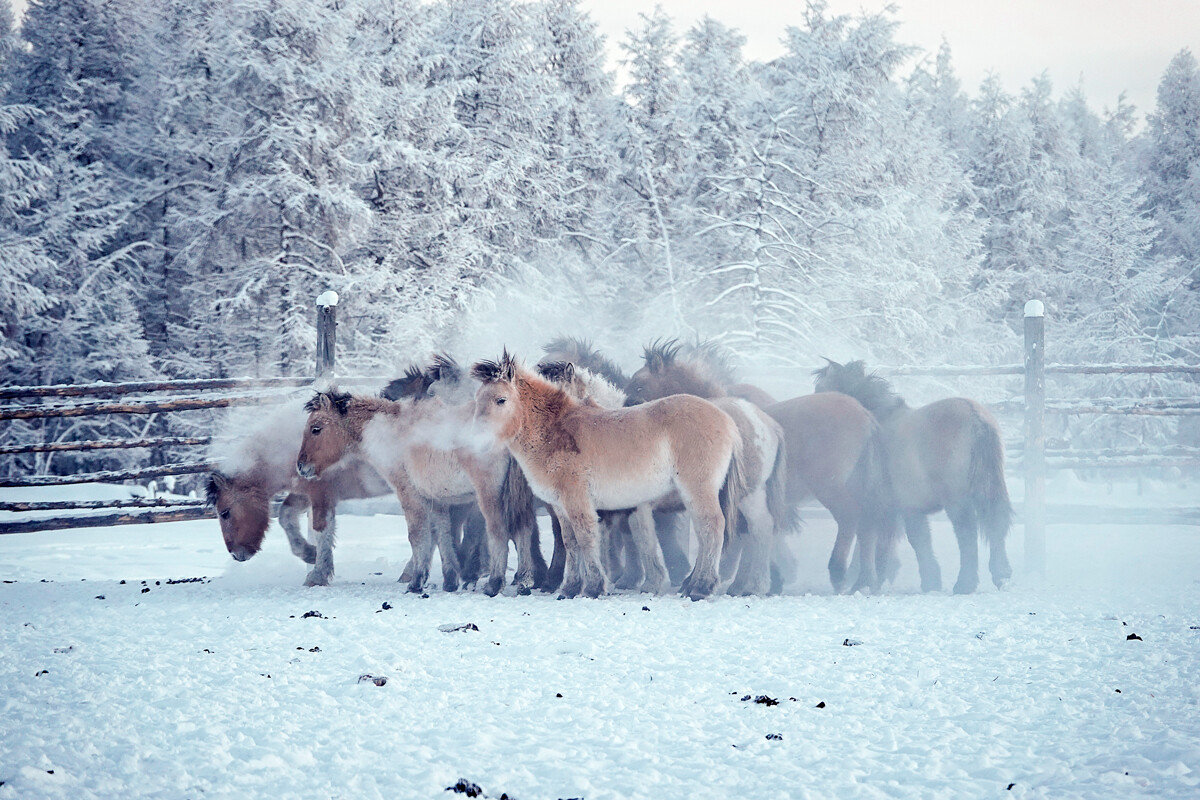
Yakut breed of horses in Oymykon.
Semen Sivtsev/Anadolu Agency/Getty Images
"People in Oymyakon are tough," says Semyon. "At minus 60C, we chop firewood, hunt and fish. You can’t live without work. However, there are times when the equipment fails. If it’s below minus 40C, for example, I keep my camera under my wide overcoat."
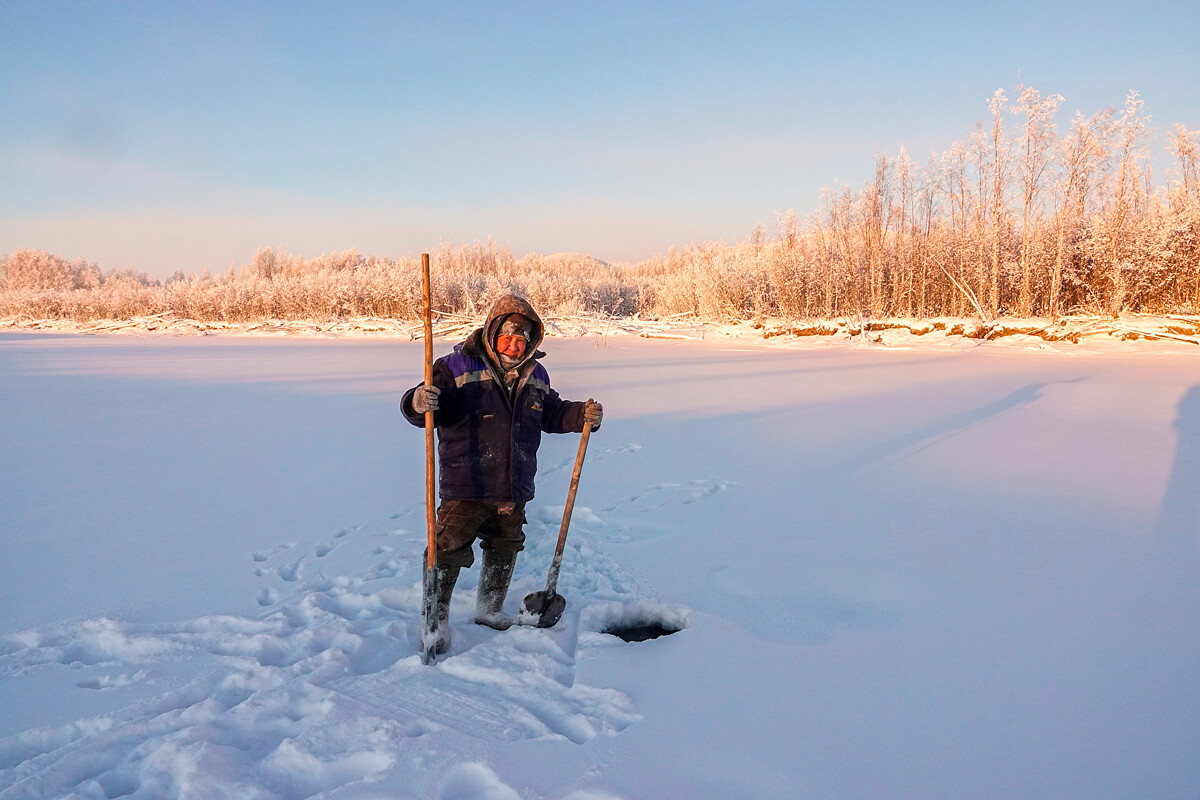
A local wears thick clothes as temperature dropped to minus 60C.
Semen Sivtsev/Anadolu Agency/Global Look Press
It is the dream of many travelers to see how people live at the "pole of cold". Tourists from Japan, India, Italy, Belgium — from all over the world — have visited the locals.
"One of the wonders of Oymyakon is water that doesn’t freeze," says Semyon. "Our water springs don’t freeze up at 60C below zero and there’s a thick layer of steam covering them. Scientists explain this by the position of tectonic plates."
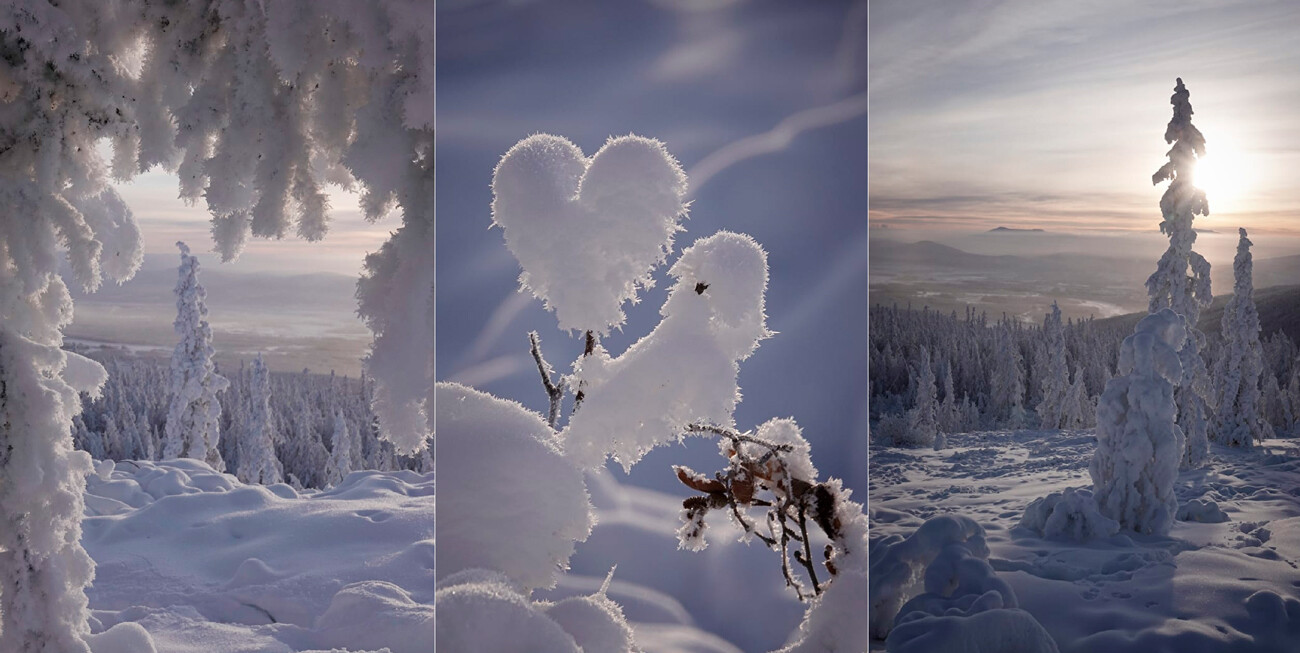
Winter beauty of Oymyakon.
Semen Sivtsev / @sivtsevsema958
The name of the village is translated as "the land of non-freezing streams". The water temperature in the Indigirka River is +4C-+5C and taking a dip in these waters is a popular activity among visitors.
Global warming above permafrost
Yakutia has a sharply continental climate. This means that cold winters can suddenly be followed by hot summers. The annual temperature fluctuations in Yakutia are astonishing: in January, it may be lower than -50C and, already in the middle of June, it may be +35C (and, several times in the past century, a temperature of +38C was recorded in different parts of the region). But locals note that, earlier, the extreme colds were far more prolonged, while the hot weather was less frequent than now.
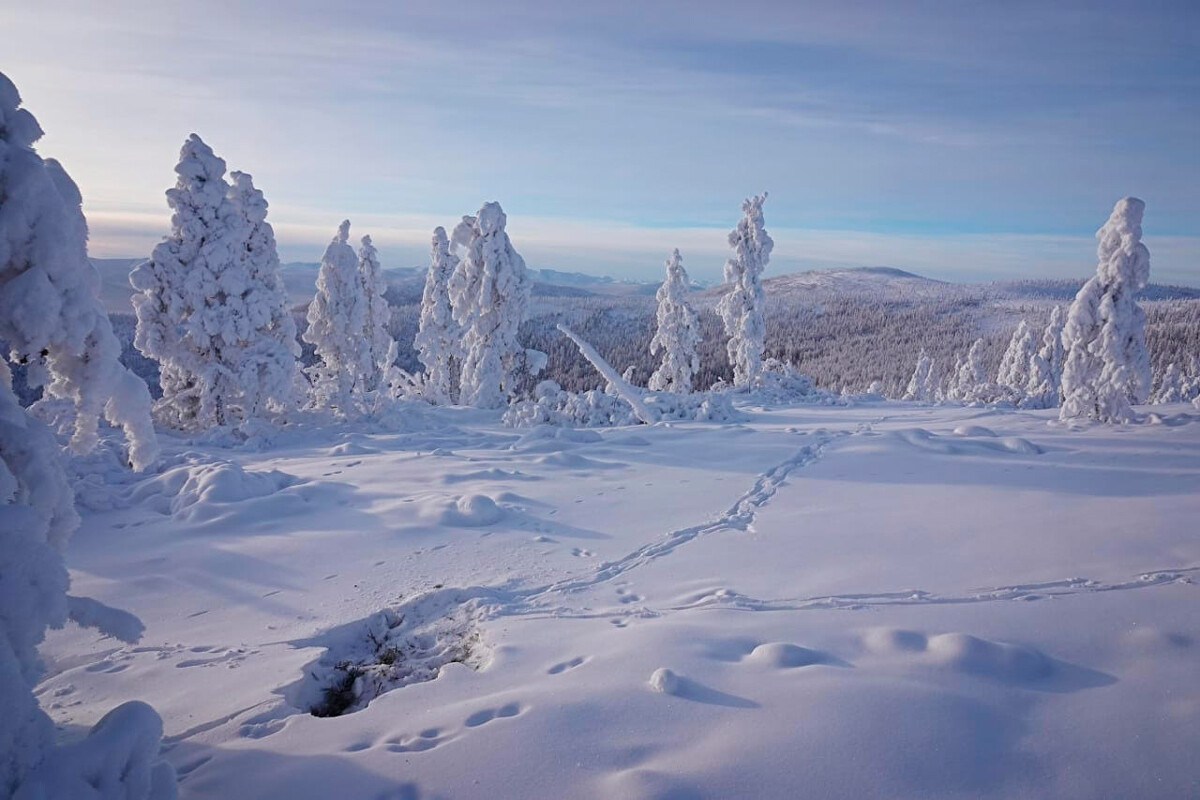
Semen Sivtsev / @sivtsevsema958
"I’m 54 years old now and, in my childhood, the winters were harsher," says Semyon. "I think it started getting warmer somewhere in the mid-1990s. Thrushes started coming to Oymyakon, also roe deer, which weren’t here before. It seems that spring starts a week earlier and winter a week later. At the same time, winters are still as harsh, with 40-50-degree temperatures as early as November."
"Cold temperatures don’t last for months anymore, a week or two and it already starts getting warmer," says Vika, adding that for Yakutsk temperatures above -40C are considered warm. "I remember it being much colder for a longer time when I was a kid."
"Global warming is generally noticeable," says Semyon. "At school, we had a field where we used to play volleyball and, about ten years ago, I visited it — it was covered with mounds. The permafrost is melting."
"It’s bad for nature, we all think about it, because the permafrost is melting and it won’t end well," Vika believes.
And finally, here’s a group of Yakut women dancing at minus 56 degrees! Celcius.
Dear readers,
Our website and social media accounts are under threat of being restricted or banned, due to the current circumstances. So, to keep up with our latest content, simply do the following:
- Subscribe to our Telegram channel
- Subscribe to our weekly email newsletter
- Enable push notifications on our website
- Install a VPN service on your computer and/or phone to have access to our website, even if it is blocked in your country



